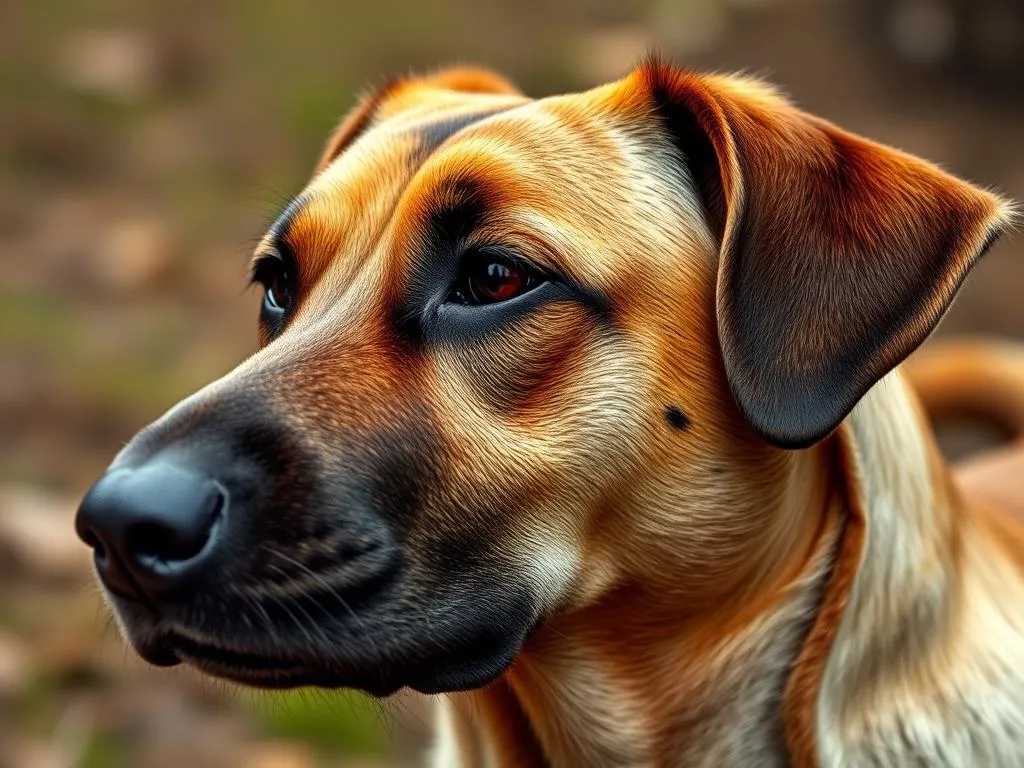
Introduction
The incredible sense of smell possessed by dogs is one of their most remarkable features. Dogs have an olfactory system that is far superior to that of humans, allowing them to detect scents at incredibly low concentrations. This incredible ability plays a crucial role in their daily lives, influencing their behavior, communication, and interaction with the world around them.
One fascinating question that arises among dog owners and enthusiasts is: can dogs smell other dogs on you? Understanding this aspect of canine behavior is essential for fostering better relationships between dogs and their humans, especially in social settings. In this article, we will explore the anatomy of a dog’s nose, how they utilize their keen sense of smell, the science behind scent detection, and the implications for dog owners. By the end, you’ll have a deeper understanding of your dog’s olfactory capabilities and how they affect your interactions with them and other dogs.
Understanding Canine Smell
Anatomy of a Dog’s Nose
To appreciate how dogs can detect scents, it’s essential to understand the anatomy of their noses. Dogs possess approximately 220 million olfactory receptors in their nasal cavities, compared to a mere 5 million in humans. This significant difference allows dogs to distinguish between a vast array of scents, making their sense of smell about 40 times more acute than that of humans.
The dog’s olfactory system includes specialized parts like the olfactory bulb, which processes scent information, and the Jacobsen’s organ, which allows dogs to detect pheromones—chemical signals that convey information between members of the same species. This sophisticated system enables dogs to not only recognize different scents but also understand what those scents mean.
How Dogs Use Their Sense of Smell
Dogs use their sense of smell in various ways, from identifying food and finding lost items to detecting danger and communicating with other dogs. When a dog encounters a new scent, they often exhibit behaviors such as sniffing and tracking, which allow them to gather more information about their environment.
Scent plays a pivotal role in canine communication; dogs can gather information about other dogs’ identities, health, and emotional states through the scents they leave behind. This ability is particularly prominent in social situations, where dogs may greet each other by sniffing, a behavior that is both natural and essential for establishing social bonds.
The Science Behind Scent Detection
The Role of Pheromones
Pheromones are chemicals secreted by animals that trigger social responses in members of the same species. In dogs, pheromones are crucial for communication, especially during mating and territorial behaviors. When dogs sniff each other, they often detect these pheromones, which provide a wealth of information about the other dog’s reproductive status, emotional state, and even health.
Dogs can also pick up on pheromones that humans may inadvertently carry from other dogs. For instance, if you pet or interact with another dog, you may unknowingly transfer some of that dog’s scent—particularly their pheromones—onto yourself. This transfer can lead to your dog reacting to your scent as if it were another dog’s presence.
Scent Memory in Dogs
Another fascinating aspect of canine olfaction is scent memory. Dogs possess an incredible ability to remember scents, which is critical for their social interactions. When a dog encounters a familiar scent, they can recall past experiences associated with that scent, influencing their behavior in the present moment.
For example, if your dog smells the scent of a dog they previously met, their memory of that encounter may affect how they react. They might become excited, anxious, or even defensive, depending on the nature of their past interaction. This ability to remember and recognize scents is a testament to the complexity of a dog’s olfactory capabilities.
Can Dogs Smell Other Dogs on Humans?
Evidence of Scent Recognition
Numerous studies have demonstrated that dogs can indeed recognize the scents of other dogs on humans. Research has shown that when dogs are exposed to the scent of another dog, they can identify it even after it has been transferred to a human. This ability is not only intriguing but also highlights the importance of scent in a dog’s social interactions.
One compelling study involved trained dogs that could differentiate between scents from different dogs and humans. The results indicated that dogs could identify the scent of their canine companions on their owners, confirming that dogs can smell other dogs on you. This ability is more than just a curiosity; it plays a significant role in how dogs interact with their environment and each other.
Factors Influencing Scent Detection
Several factors can influence a dog’s ability to detect other dogs’ scents on humans. These include:
-
Breed: Some dog breeds have a more developed sense of smell than others. Scent hounds, for example, are bred specifically for tracking scents and may be more adept at recognizing other dogs’ scents compared to non-scent hound breeds.
-
Age: A dog’s age can also impact its olfactory abilities. Younger dogs generally have a more acute sense of smell, while older dogs may experience a decline in their olfactory sensitivity.
-
Health: A dog’s health can significantly affect its sense of smell. Conditions affecting the nasal passages, such as infections or allergies, may impair a dog’s ability to detect scents accurately.
-
Environmental Factors: Wind direction, humidity, and temperature can all influence how scents travel and how well a dog can pick them up. For example, strong winds may disperse scents, making it more challenging for dogs to detect them.
Behavioral Signs of Scent Detection
How Dogs React to Scent
When dogs detect another dog’s scent on you, they often exhibit specific behaviors that indicate their interest. Common signs include:
-
Sniffing: This is the most obvious behavior. Dogs will often sniff your clothes, hands, or even your face when they catch the scent of another dog.
-
Eagerness to Explore: If your dog suddenly becomes excited or eager to explore their surroundings, it may be a sign that they have picked up another dog’s scent.
-
Vocalizations: Some dogs may bark or whine when they smell another dog, expressing their excitement or desire to meet the other canine.
Interpreting Dog Behavior
Understanding what these behaviors mean is crucial for dog owners. For instance, if your dog sniffs you and then becomes agitated or defensive, it could indicate that they are picking up on a scent that makes them feel threatened or uncomfortable. Conversely, if they seem excited or playful, they may be recognizing a familiar scent that brings back happy memories.
Being attentive to these behaviors can help you manage your dog’s interactions with other dogs and ensure positive experiences during socialization.
Practical Implications for Dog Owners
Socialization and Dog Interactions
Recognizing that dogs can smell other dogs on you has practical implications for socialization. It underscores the importance of allowing dogs to interact with each other in safe and controlled environments. Socialization helps dogs become accustomed to the presence of other dogs, reducing anxiety and aggression.
When your dog meets other dogs, they will inevitably exchange scents. This interaction is vital for their social development and can help them learn appropriate behaviors in a pack setting. Regular playdates, trips to the dog park, or dog training classes can all facilitate positive social experiences.
Managing Your Dog’s Behavior
As a dog owner, knowing how to manage your dog’s behavior when they pick up another dog’s scent is essential. Here are some tips to consider:
-
Stay Calm: Dogs can sense their owners’ emotions. If you stay calm and composed, it can help your dog feel more secure in social situations.
-
Redirect Attention: If your dog becomes overly excited or fixated on another dog’s scent, try redirecting their attention to a toy or a treat. This can help refocus their energy and prevent unwanted behaviors.
-
Practice Controlled Introductions: When introducing your dog to new canine friends, do so in a controlled manner. Allow them to sniff each other while on leashes, and observe their body language to ensure both dogs are comfortable.
-
Positive Reinforcement: Reward your dog for calm behavior around other dogs. This can help reinforce positive interactions and reduce anxiety in future encounters.
FAQs about Dogs and Scent
Can dogs smell fear or anxiety in humans?
Yes, dogs can indeed smell fear or anxiety in humans. When a person is anxious or fearful, their body releases specific pheromones and hormones, such as adrenaline, which dogs can detect. This ability allows dogs to respond to human emotions, often leading to protective or empathetic behaviors.
How long can a dog’s scent linger on a person?
A dog’s scent can linger on a person for several hours to days, depending on various factors such as the strength of the scent and how much contact occurred between the dogs. If you interact closely with a dog, their scent can transfer to your clothing and skin, which your dog may then recognize later.
What should I do if my dog reacts negatively to another dog’s scent?
If your dog reacts negatively to another dog’s scent, it’s crucial to remain calm and assess the situation. Try to remove your dog from the stimulus by redirecting their attention or creating distance from the source of anxiety. Gradual desensitization to other dogs’ scents can also be beneficial. Consult with a professional dog trainer or behaviorist if negative reactions persist.
Conclusion
Understanding that dogs can smell other dogs on you provides valuable insights into canine behavior and social interactions. By appreciating their incredible olfactory capabilities, dog owners can foster better relationships with their pets and enhance their social experiences. Observing your dog’s behavior and recognizing the significance of scent can lead to more positive encounters with other dogs.
As you continue to engage with your furry friend, take note of their reactions and behaviors in social settings. Encouraging positive interactions and understanding the nuances of canine communication will ultimately create a happier and healthier environment for both you and your dog.









